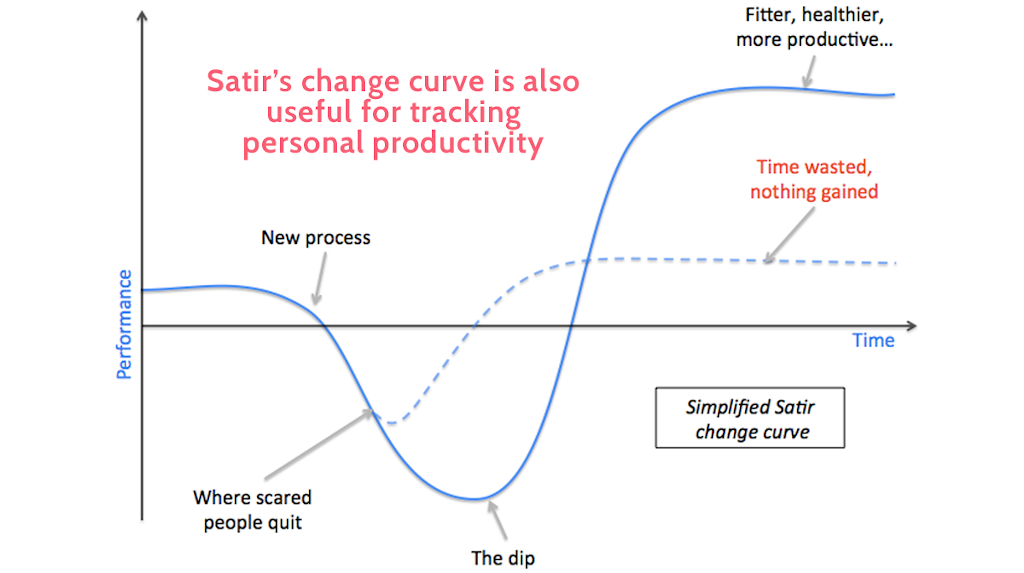Satir Change Management Model Process Checklists focuses on the emotions an employee will go through during change to manage the impact of these emotions on overall performance.
Satir Change Management Model: An introduction
Developed by Virginia Satir the Satir Change Model is similar to the Kubler-Ross model in that it applies the five stages of grief during the process of change. The Satir model is a way of predicting and tracking the impact of change on the overall performance of the employees.
The Satir change management model is made up of 5 stages:
- Late Status Quo
- Resistance
- Chaos
- Integration
- New status Quo
As this model focuses on tracking the impacts of change on performance, rather than tackling negative performance effects, it is best practice to use the Satir Change Management Model alongside a method that actively supports your changes.
What's good about it
Like Kubler-Ross, the Satir is good at anticipating the impact of a change before it happens. The model even justifies the change to the employees as they go through the chaos phase. The turmoil they face during this stage is accepted to be natural, meaning the changes are more likely to stick.
The Satir model provides an easy way to analyze the impact of changes at a glance - by producing a graph detailing ongoing performance. You can compare the effects of various changes made and provide a measure of your business progression.
What's bad about it
The Satir Change Model assumes that change will increase performance. This assumption is not checked and often taken for granted.
It is also difficult to tell when the last stages of change have been reached, with few actionable tips to guide the employees through the process.
Finally, the Satir model is only suited for measuring and predicting the effect of change, and not for analyzing what changes need to be made (or how to make them).
How to use this checklist
At the beginning of this checklist, you will be presented with a set of specialized questions given as form fields. You are required to populate each form field with your data.
The checklist is broken down into the 5 stages of the Satir Change Management Model:
- Stage 1: Late status quo
- Stage 2: Resistance
- Stage 3: Chaos
- Stage 4: Integration
- Stage 5: New status quo
At the end of each stage, your supervisor/manager will review your work using Process Street's approvals feature. Other features used in this template include:
- Stop tasks - To ensure task order.
- Dynamic due dates - To make sure your initiative is reviewed on time.
- Role assignment - To delegate tasks within your tea, ensuring your supervisors is appropriately assigned to the review tasks.
- Approvals - Tasks can be accepted, rejected and rejected with comments.






